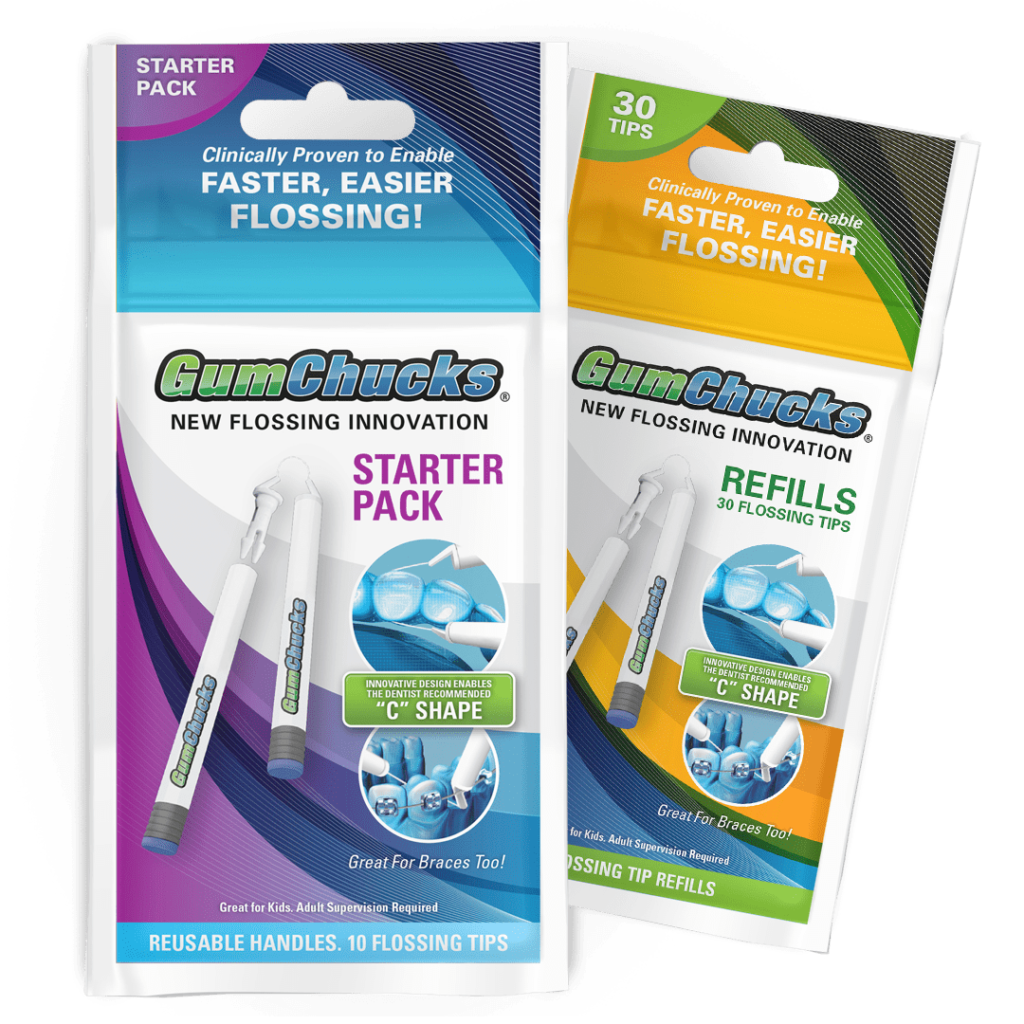Baby teeth, often referred to as Primary Teeth or Deciduous Teeth, usually begin to show in an infant’s mouth anywhere between 4 and 7 months old. Through this process called Teething, 20 baby teeth erupt through the gumline which can commonly result in uncomfortable oral symptoms. Let’s lay out everything you need to know about the health and development of baby teeth and methods to ease your infant’s discomforting teething process.
Teething
As infant’s begin teething, they might drool more than normal and try to chew on anything they can get their hands on. The first teeth to appear are generally the two bottom front teeth, followed soon after by the four front upper teeth. While many babies don’t experience discomfort when their primary teeth start coming in, some babies can have sore or tender gums causing them to respond in a cranky manner. Parents can ease their baby’s teething pain by massaging their gums with a clean finger, a new wet gauze, or a small cool spoon. Tender and swollen gums from teething could cause your baby’s temperature to rise, however, it’s important to contact your doctor if these symptoms continue to persist.
Outlining Deciduous Teeth
There are 20 primary teeth, 10 upper and 10 lower, that are typically fully grown in by the time a child is 3 years old. We’ve previously posted a blog that details the 32 teeth in a typical adult mouth, however, here’s a detailed layout describing deciduous teeth:
- Incisors – These are the 8 teeth (4 on top, 4 on bottom) that come together to cut through food like a pair of scissors.
- Canines – These are the 4 pointy teeth (2 on top, 2 on bottom) on either side of the incisors that tear through food.
- Premolars – These are the 4 flat-top teeth (2 on top, 2 on bottom) towards the back of the infant’s mouth that are used to crush food.
- Molars – Being larger than premolars, these 4 flat-top teeth (2 on top, 2 on bottom) at the back of the mouth are broad and used to grind food.
There are more differences between baby teeth and adult teeth than just size and quantity. For example, the roots of baby teeth are shorter due to the fact that they’re designed to fall out. Additionally, baby teeth have a thin protective enamel which often results in them to be visibly whiter in color than adult teeth. Finally, primary teeth often have small bumps that tend to wear off over time, resulting in a different tooth shape when compared to adult teeth.
Caring for Baby Teeth
Parents may inaccurately believe that caring for baby teeth isn’t important because they later fall out and are replaced with adult teeth. In fact, baby teeth are so important that parents should be taking their infant into the dentist as soon as their first primary tooth begins to show. An early dental visit can show a parent how to clean their baby’s teeth and demonstrate how to deal with bad habits like thumb sucking.
Maintaining the health of deciduous teeth is vital to reserving a suitable space in your infant’s gums for their future adult teeth. If baby teeth are ignored, they began to decay which leads to a variety of oral health issues such as mouth pain, dental abscesses, severe gum issues, and a sleep deprivation. While deciduous teeth start falling out around the age of 6, it’s important to floss and brush your baby’s teeth with a small amount of fluoride toothpaste twice per day as soon as their primary teeth begin to erupt through their gums.
GumChucks
As we’ve established, flossing and brushing your baby’s teeth twice a day is essential to keeping their gums and teeth healthy. Flossing is the only way to remove plaque from between their teeth, flossing regularly also helps keep tartar out of hard-to-reach places. GumChucks’ design ensures a flossing experience that’s faster, easier, and more effective than competing flossers or traditional floss. Our two handles with disposable floss allow you to comfortably reach all your infant’s teeth, even those in the back while gently wrapping the floss around each tooth. This creates the vital “C-Shape” necessary to get below the gum line and effectively clean each tooth.

GUMCHUCKS MAKES FLOSSING FUN, FAST, AND EASY!
Click here to get started with GumChucks today!

0 Comments